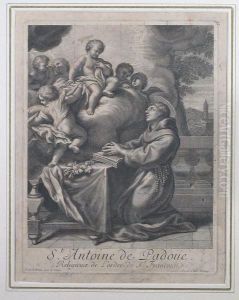Claude Duflos Paintings
Claude Duflos was a French engraver born in Paris in 1665. Coming from a family of artists, Duflos received his initial artistic training from his father, who was also an engraver. He honed his skills and developed a distinctive style that combined finesse and clarity, which became highly appreciated during his lifetime. Duflos gained recognition for his ability to translate paintings into engravings with great fidelity and for his original compositions.
Duflos's career flourished in the late 17th and early 18th centuries, a period that was characterized by the grandeur of the Baroque style and the beginning transition to Rococo. He was part of the Royal Academy of Painting and Sculpture, a prestigious institution that played a significant role in the artistic life of France during the reign of King Louis XIV. Duflos made significant contributions to the art of engraving and was involved in various important projects, including the creation of plates for books and illustrations for literary works.
His engravings covered a wide range of subjects including portraits, religious themes, and reproductions of paintings by renowned artists of his time. Duflos's mastery in the art of engraving was not only in the technical execution but also in his ability to capture the essence and subtleties of the original artworks. He was instrumental in promoting engraving as a respected art form in its own right, rather than merely a means of reproducing other works.
Claude Duflos passed away in 1727. His legacy continued through his works, which have been collected and admired by art enthusiasts and have provided valuable insights into the artistic trends and cultural context of the late 17th and early 18th centuries in France. Duflos's engravings remain a testament to his skill and dedication to the art of printmaking, showcasing the elegance and detail that could be achieved in this medium.
